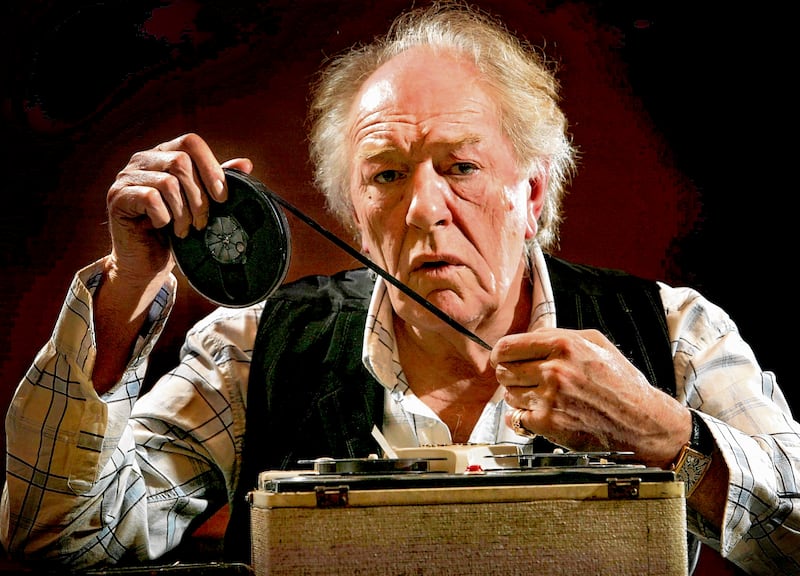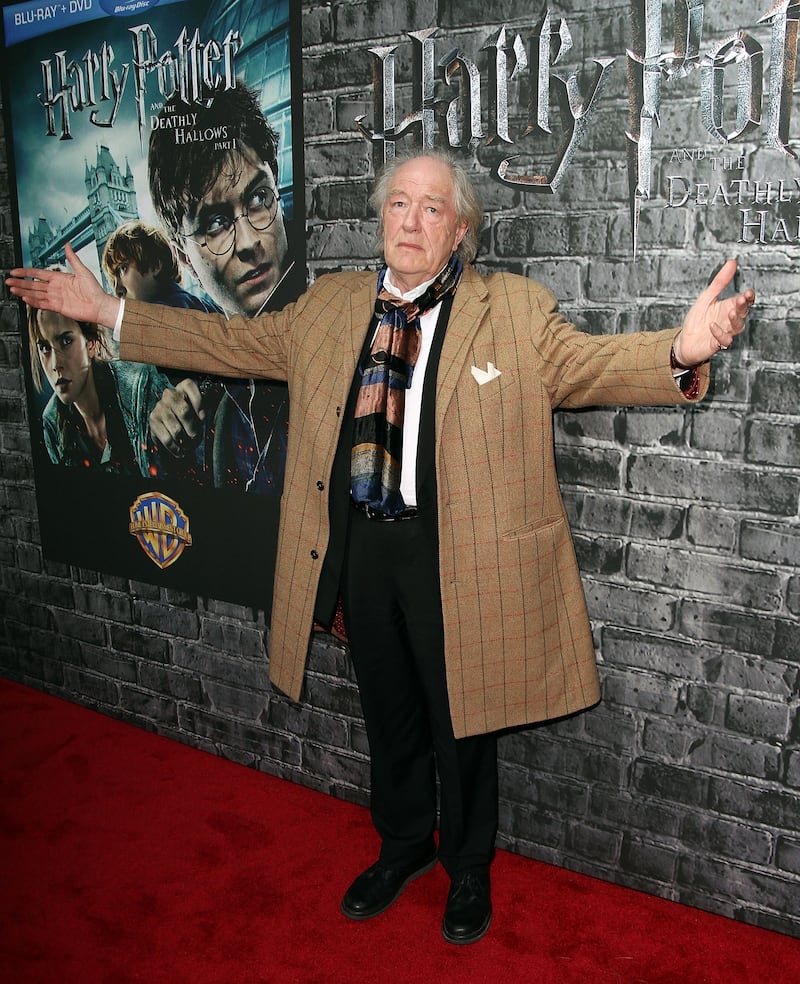Sir Michael Gambon, who has died in Essex at the age of 82, could make a reasonable claim to be the best Irish and the best English actor of his generation. He made his professional stage debut at the Gate Theatre in Dublin in 1962 and went on work busily at the National Theatre under Laurence Olivier and at the Birmingham Repertory Company.
Wider fame arrived in 1986 with his searing performance as troubled mystery writer Philip E Marlow in Dennis Potter’s TV series The Singing Detective. That performance brought him the first of four Bafta awards.
He became a singular presence – hulking, sometimes menacing, often sweetly confused – in films such as The Cook, the Thief, His Wife & Her Lover (1989), The King’s Speech (2010) and Gosford Park (2001). Gambon won three Olivier awards for his work on the London stage and returned often to Irish theatres. His work at the Gate in plays by Harold Pinter and Samuel Beckett was particularly memorable.
In later years, he gained a new tranche of fans after taking over the role of Albus Dumbledore from Richard Harris in the Harry Potter films. Through it all he cultivated a reputation as an inveterate prankster and deflator of pretension.
From Baby Reindeer and The Traitors to Bodkin and The 2 Johnnies Late Night Lock In: The best and worst television of 2024
100 Years of Solitude review: A woozy, feverish watch to be savoured in bite-sized portions
How your mini travel shampoo is costing your pocket and the planet - here’s an alternative
My smear test dilemma: How do I confess that this is my first one, at the age of 41?
Michael Gambon was born on the north side of Dublin in 1940. It is often said he grew up in Cabra, but, in an interview with Gambon for The Irish Times in 2010, Fiona McCann reported that he believes the home was actually in nearby Phibsborough. “I have no memory if it,” he told McCann. “I was only a kid when I was taken to England, so I remember very little. I remember coming back on holidays with my parents, going to the seaside and all that, but I don’t remember anything else. It’s all a blur.” He was, nonetheless, capable of dropping instantly into a perfect Dublin accent many decades later.
[ Irish actor and Harry Potter star Michael Gambon dies aged 82Opens in new window ]
His father, an engineering worker, moved the family to Camden in North London as the city sought to rebuild after the war. He remembered careering about the cratered streets and breaking into London Zoo at night. Gambon started out acting with the Unity Theatre – effusion of the Workers’ Theatre Movement – near Kings Cross, but returned home for his professional debut.
In 1962, he was still barely even an amateur when he wrote to the founder of the Gate Theatre. “I hadn’t done any acting,” he told The Irish Times in 2006. “I wrote to Micheál MacLiammóir and I told him a lot of lies, as you do, because I was of the opinion that people didn’t really read letters.” He ended up securing a role in a touring production of Othello that opened at the Gaiety.
The yarn recalls the similar deceptions Orson Welles had successfully run on MacLiammóir some 30 years earlier, but, unlike the American, Gambon had to wait a long time to become a proper star. He spent a good part of the 1960s carrying spears at the Old Vic, where the Olivier’s National Theatre was then based. He then got larger parts at the Birmingham Rep.
Film roles in the succeeding decade – a tricky time for British cinema – comprised stints in horror projects Nothing But the Night and The Beast Must Die. But he was establishing a strong reputation on stage.
He stormed the National Theatre – now in its newish, concrete home on the South Bank – with his turn in the first production of Harold Pinter’s Betrayal in 1979. Roles in Alan Ayckbourn plays confirmed his comic gifts.
Nonetheless, when, then deep into his mid-forties, he turned up in The Singing Detective, many among the appreciative viewers saw this as a much-belated “breakthrough”. Poignantly representing Potter’s own struggles with psoriatic arthropathy – skin peeling off raw skin – Gambon established a connection that continued with the public for the rest of his career. There was an awful mortal sadness to the performance, a portent of the decay that comes to us all. But the script also allowed him to exercise his taste for subversive humour.
That taste for the rag showed through in a self-confessed taste for bending the truth in interviews. He once told an interviewer he had been in the Royal Ballet, but had to give it up after he fell off the stage. “It’s in one of those handbooks,” he explained to the Guardian in 2004. “‘Used to be a dancer’. The reporter said to me, ‘Ooh, was it painful?’ So I said, ‘Yes, I fell through the timpani.’” (Did he really tell another reporter that he was gay, but had to give it up because “it made his eyes water”? The story persists.)
Following that success with The Singing Detective, Gambon seemed to pass straight from cult icon to beloved national treasure. On both sides of the Irish Sea. That relish for gathering drenched gloom – as he aged there was something of WH Auden’s “wedding cake left out in the rain” about his face – around sly humour could hardly have been better suited to the work of Samuel Beckett. His Krapp’s Last Tape at The Gate in 2010 was a revelation. “Gambon sways between light and darkness. Now you see him, now you don’t,” Peter Crawley wrote in The Irish Times.

Then there was Harry Potter. In 2002, Gambon stepped into the role created by Richard Harris. He will have known that obituaries would find a place for that character towards the top of the copy. Such was the power of JK Rowling’s creation. In 2015, he had to retire from the stage, admitting that the memory was not what it was. “It’s a horrible thing to admit but I can’t do it. It breaks my heart. It’s when the script’s in front of me and it takes forever to learn. It’s frightening,” he said.
He married Anne Miller, a mathematician in 1962, but, a private man, never expanded much on family life in interviews. He left the world as an actor with no obvious peers. An utter original. Capable of threat and pathos. Able to boom, and to shrink into his large frame. The Irish actor Fiona Shaw was among those celebrating his career. “He could make guns,” she told the BBC. “He always said he could fool the V&A into believing that they were 18th century guns. So I will think of him as a trickster, just brilliant, magnificent trickster, but with text, there was nothing like him, he could do anything.”







